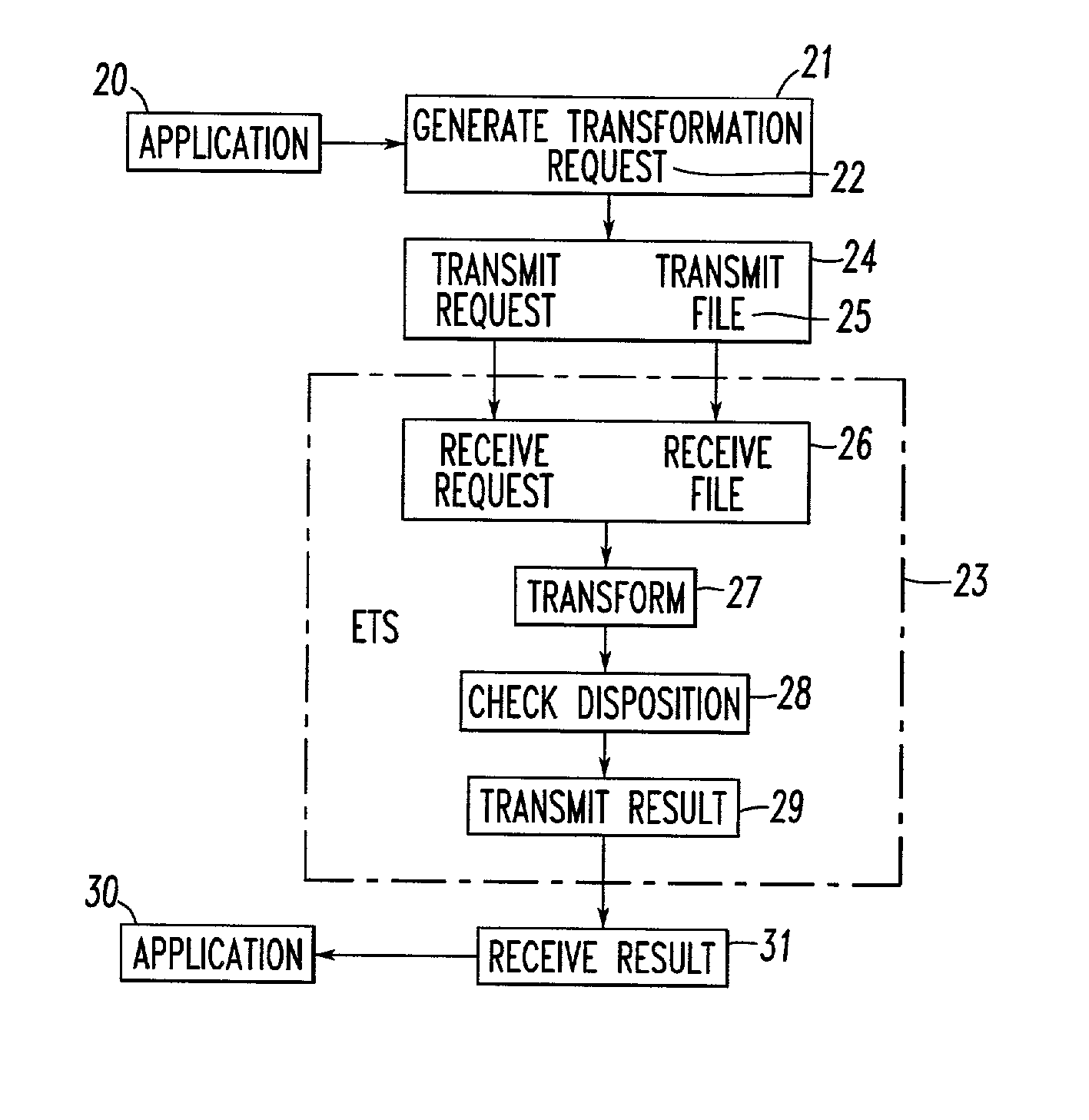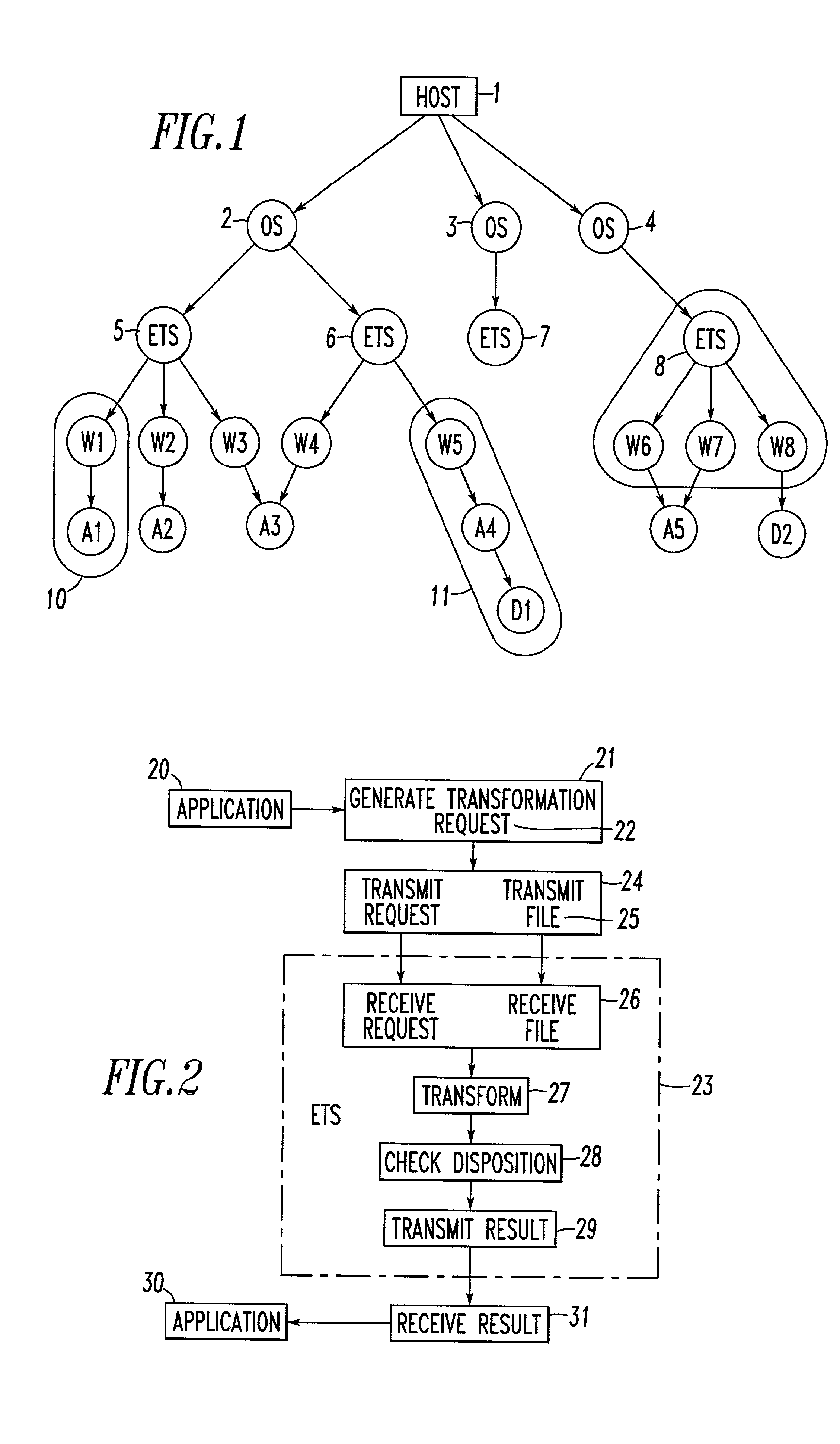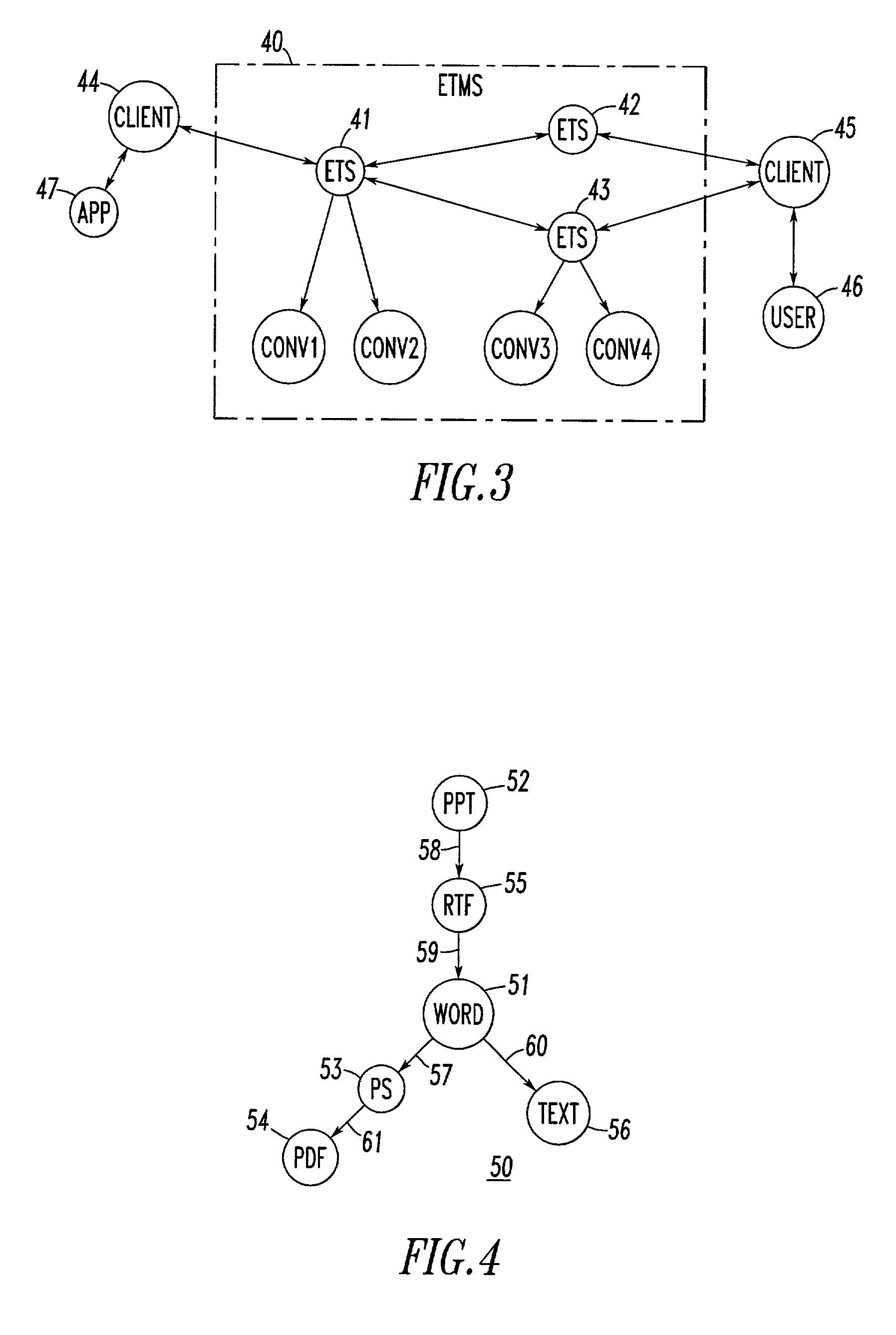Method and system for data transformation in a heterogeneous computer system
a computer system and data technology, applied in the field of systems for transforming data, can solve problems such as further complicated problems, not all transformations are always straightforward or even feasible, and the delay in acquiring such solutions and updating the computer system is substantial
- Summary
- Abstract
- Description
- Claims
- Application Information
AI Technical Summary
Benefits of technology
Problems solved by technology
Method used
Image
Examples
Embodiment Construction
or PENDING. Alternatively, this functionality can also be built into the ETS instead of the wrapper. In this case, the ETS maintains this information for all local wrappers (or edgelets).
[0226] When either a local or remote wrapper is invoked (510 or 500, respectively, of FIG. 20), a non-failure results in both the transformation order and the edgelet being placed in the BUSY state. If the edgelet is remote, on invocation, the transformation order is put into a CONVSEND state. The transition from this state occurs when the edgelet sends an IPC message indicating a successful request transmission or its failure. The result is the same as above--a success results in transition to the BUSY state, and a failure results in the edgelet being removed immediately and the transformation order remains in the IDLE state. In all three cases, the transformation module 92 of FIG. 5 starts a timer. The timer duration depends on whether this is a remote or a local edgelet. This duration is also mod...
PUM
 Login to View More
Login to View More Abstract
Description
Claims
Application Information
 Login to View More
Login to View More - R&D
- Intellectual Property
- Life Sciences
- Materials
- Tech Scout
- Unparalleled Data Quality
- Higher Quality Content
- 60% Fewer Hallucinations
Browse by: Latest US Patents, China's latest patents, Technical Efficacy Thesaurus, Application Domain, Technology Topic, Popular Technical Reports.
© 2025 PatSnap. All rights reserved.Legal|Privacy policy|Modern Slavery Act Transparency Statement|Sitemap|About US| Contact US: help@patsnap.com



